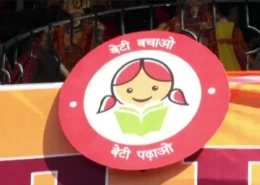What steps have the Indian Armed Forces taken towards gender equality, and what more needs to be done to achieve true equality?
Having more women in tech roles is crucial for driving innovation, growth, and social change in the industry and beyond. It has numerous social and economic benefits, including: Social Impacts Enhanced innovation and problem-solving through diverse perspectives Better representation of female consumRead more
Having more women in tech roles is crucial for driving innovation, growth, and social change in the industry and beyond. It has numerous social and economic benefits, including:
Social Impacts
- Enhanced innovation and problem-solving through diverse perspectives
- Better representation of female consumers, leading to more inclusive product development
- Improved workplace culture, resulting in increased job satisfaction and reduced turnover rates
- Increased role models and mentors, inspiring more women to pursue tech careers
Economic Impacts
- Increased business revenue and growth through diverse teams and inclusive decision-making
- Significant contributions to global economic growth, with estimates suggesting an additional $12 trillion in GDP by 2025
- Job creation and reduced turnover rates, resulting in cost savings and improved talent retention
- Access to a wider talent pool, enabling companies to attract and retain top performers
Moreover, promoting gender diversity in tech helps address the industry’s skills gap and improves the overall quality of life. It also leads to more equitable distribution of wealth and opportunities, promoting social justice. By fostering an inclusive tech ecosystem, we can unlock these benefits and create a more inclusive, prosperous, and innovative industry that benefits everyone.
See less


The Indian Armed Forces have made significant progress in achieving gender equality, but there is still room for improvement. *Milestones:* 1. 1992: Women inducted into Armed Forces as officers. 2. 2004: Women allowed in combat support roles. 3. 2015: Women allowed in combat roles in Indian Air ForcRead more
The Indian Armed Forces have made significant progress in achieving gender equality, but there is still room for improvement.
*Milestones:*
1. 1992: Women inducted into Armed Forces as officers.
2. 2004: Women allowed in combat support roles.
3. 2015: Women allowed in combat roles in Indian Air Force (IAF).
4. 2019: Women allowed in combat roles in Indian Army and Navy.
5. 2020: Supreme Court orders permanent commission for women officers.
*Current Status:*
1. Women comprise 3% of total armed forces personnel.
2. 1,500+ women officers serve in Army, Navy, and IAF.
3. Women serve in various roles: pilots, engineers, medical officers, and more.
*Challenges:*
1. Limited opportunities for women in combat roles.
2. Stereotypes and biases persist.
3. Limited representation in senior ranks.
4. Infrastructure and facilities for women personnel.
5. Societal attitudes and family pressures.
*Reforms and Initiatives:*
1. Increased recruitment of women.
2. Training programs for women officers.
3. Separate facilities and infrastructure.
4. Support systems for women personnel.
5. Review of promotion policies.
*International Comparison:*
1. India ranks 13th in women’s representation in armed forces (Global Gender Gap Report).
2. Countries like US, UK, and Canada have higher women’s representation.
*Way Forward:*
1. Increase women’s recruitment and retention.
2. Expand combat roles and opportunities.
3. Address stereotypes and biases.
4. Improve infrastructure and facilities.
5. Encourage women to join and stay in the armed forces.
See less